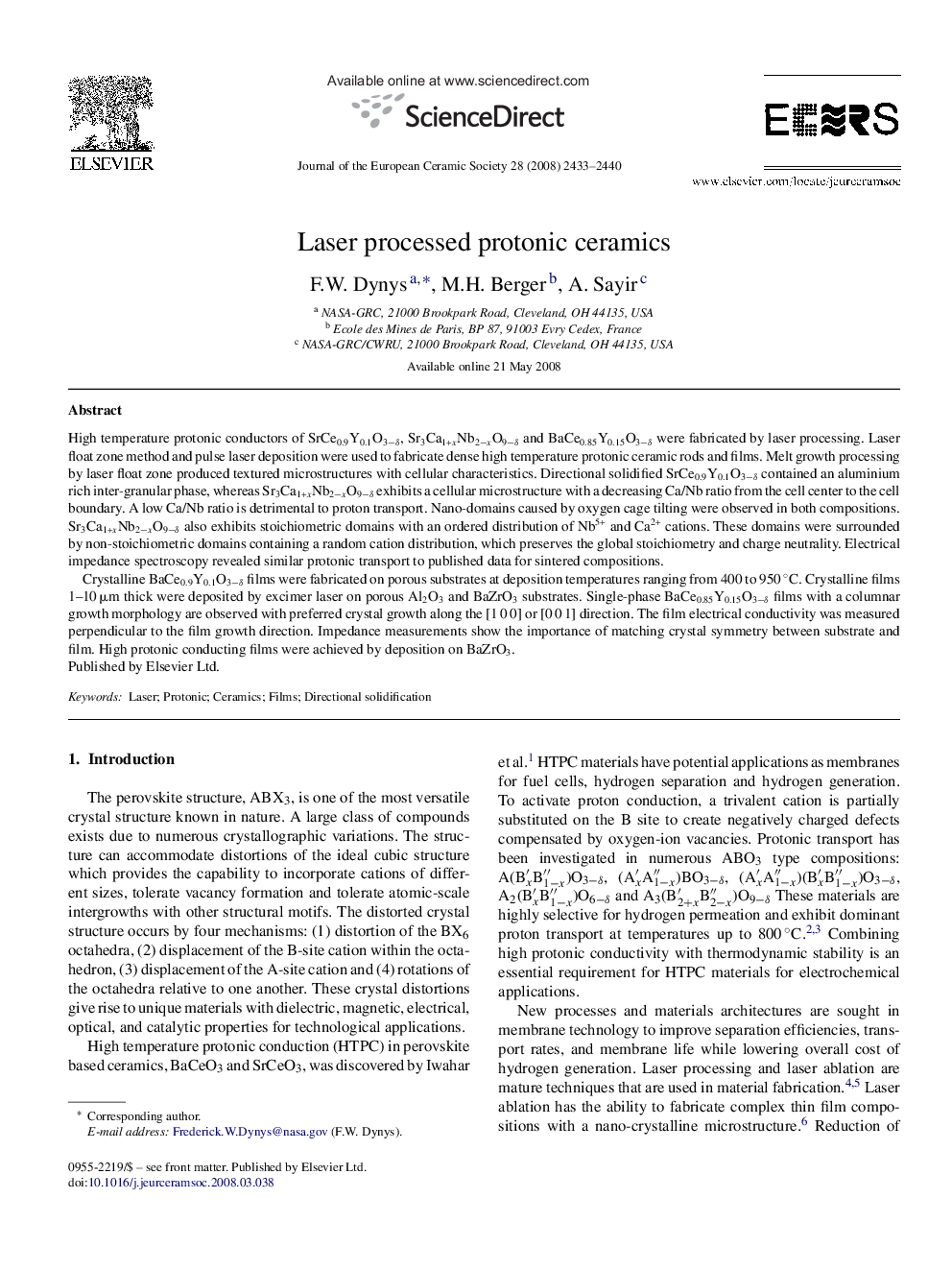| Article ID | Journal | Published Year | Pages | File Type |
|---|---|---|---|---|
| 1477669 | Journal of the European Ceramic Society | 2008 | 8 Pages |
High temperature protonic conductors of SrCe0.9Y0.1O3−δ, Sr3Ca1+xNb2−xO9−δ and BaCe0.85Y0.15O3−δ were fabricated by laser processing. Laser float zone method and pulse laser deposition were used to fabricate dense high temperature protonic ceramic rods and films. Melt growth processing by laser float zone produced textured microstructures with cellular characteristics. Directional solidified SrCe0.9Y0.1O3−δ contained an aluminium rich inter-granular phase, whereas Sr3Ca1+xNb2−xO9−δ exhibits a cellular microstructure with a decreasing Ca/Nb ratio from the cell center to the cell boundary. A low Ca/Nb ratio is detrimental to proton transport. Nano-domains caused by oxygen cage tilting were observed in both compositions. Sr3Ca1+xNb2−xO9−δ also exhibits stoichiometric domains with an ordered distribution of Nb5+ and Ca2+ cations. These domains were surrounded by non-stoichiometric domains containing a random cation distribution, which preserves the global stoichiometry and charge neutrality. Electrical impedance spectroscopy revealed similar protonic transport to published data for sintered compositions.Crystalline BaCe0.9Y0.1O3−δ films were fabricated on porous substrates at deposition temperatures ranging from 400 to 950 °C. Crystalline films 1–10 μm thick were deposited by excimer laser on porous Al2O3 and BaZrO3 substrates. Single-phase BaCe0.85Y0.15O3−δ films with a columnar growth morphology are observed with preferred crystal growth along the [1 0 0] or [0 0 1] direction. The film electrical conductivity was measured perpendicular to the film growth direction. Impedance measurements show the importance of matching crystal symmetry between substrate and film. High protonic conducting films were achieved by deposition on BaZrO3.
